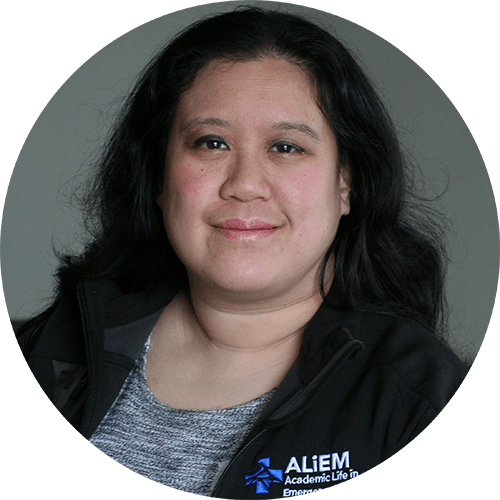The Problem
The American Board of Emergency Medicine (ABEM), American Osteopathic Board of Emergency Medicine (AOBEM), and the Royal College of Emergency Medicine (RCEM) require successful completion of an oral examination as part of the certification process for the specialty of emergency medicine. Residents are seldom taught explicitly about the process of developing oral board examinations. While deliberate and guided practice can improve performance in such examinations, understanding the design and structure of an oral examination can also ease anxiety about the experience.
The Innovation
The Practice Oral Case Construction Session is an interactive, social activity involving both junior and senior learners that is aimed at improving comfort with oral board examinations. This activity allows participants to become familiar with an oral examination format (both in construction, and the style of answering) in a safe, simulated, experiential manner with peer and faculty support.
Target Learners
This innovation was targeted toward a one-room school house. In our particular session, 20 residents and one medical student participated in the class.
Group Size
We divided the class into 4 teams, which required approximately 90-120 minutes to run.
Materials Needed
Prior to the session, the participants read 2 textbook chapters (Rosen’s Chapter 30 entitled Gastrointestinal Bleeding and Robert’s & Hedges Chapter 41 on Balloon Tamponade of Gastroesophageal Varices). Participants then considered what types of cases could be built and what types of questions could be asked based on the chapter content. In addition, participants were given a template for a case.
Description of the Innovation
PART I: Developing the Cases

In this image, a team of mixed learners (including attendings, senior and junior residents) works together to develop a case.
- The group split up into teams of 4-5 individuals of mixed levels of training.
- We provided each group with an examplar case. (See this document)
- Each group received a specific prompt around which to develop a case (for example, a patient who presents with an upper GI bleed, decompensates and requires intubation).
- The groups then constructed the details of the case within their small groups during a 25-30 minute time period. The instructor circulated from group to group, providing treats (Garrett’s popcorn), listening in, offering advice, and answering questions. Groups were instructed to include the stem of the case as well as specific exemplar answers anticipated from trainees working through the case. See an example case that our residents developed here and here.
PART II: Answering the Cases

Large Post-It Self-Stick Table Top Pad sheets were provided for the responding team to write notes and organize their thoughts as they would be able to do during an oral boards case.
- The teams then challenged one another to work through each other’s cases.
- The team that developed the case delivered their case (as the “examiner”) while another team would think through, discuss, and subsequently share the answer to the case.
- The exercise continued until all teams had the opportunity to serve as both examiners and examinees.
- Faculty present offered advice and helped with answering questions during cases.
Theory Behind the Innovation
There are several theories that align well with this innovation:
- Social Constructivism: Social constructivism is a learning theory that human development is socially situated and knowledge is constructed through interaction with others.1 Theoretically, working with content in a social setting (versus passively reading it) enhances engagement and learning.1 In this activity, the learners brainstormed together and experimented with ideas as they developed their case. When they acted as the examiners, they received real-time feedback from other learners about confusion points, or clarification points about where their case construction was problematic or could be improved. You can read more about social constructivism on the International Clinical Educators (ICE) blog.
- Community of Practice – A community of practice (CoP) is a group of people who share a common interest or profession that allows members to learn from each other through sharing information and experiences.2 These groups generally incorporate a mix of junior members (peripherally legitimate members, who are apprenticing into a field) and more senior members (legitimate members, who are masters in a domain). The learners were intentionally placed in mixed groups so that the senior residents scaffolded the learning of the junior residents. The presence of two attendings also provided additional insights and wisdom, which further enriched the CoP. Junior residents then apprentice under senior residents through peer-interactions. Senior residents act as both masters for junior residents, as well as apprentices under attendings, with whom they discuss their higher-order questions. The junior residents also benefit by hearing the discussions between senior residents and attendings and absorbing knowledge gained from the answers. You can read more about CoP on the ICE blog.
Lessons Learned
Many residents provided feedback that this approach provided them with a “behind-the-scenes” look into the construction of oral examinations. The activity also fostered engagement with the pre-reading materials in a meaningful way, and allowed learners to actively engage in application of the material to a clinical scenario. Outcome measures that could be explored in the future include the effect of the activity on medical knowledge related to the topic, as well as performance and comfort level with practice oral examinations.
Author information
The post IDEA Series: Interactive Practice Oral Examination Case Construction appeared first on ALiEM.

